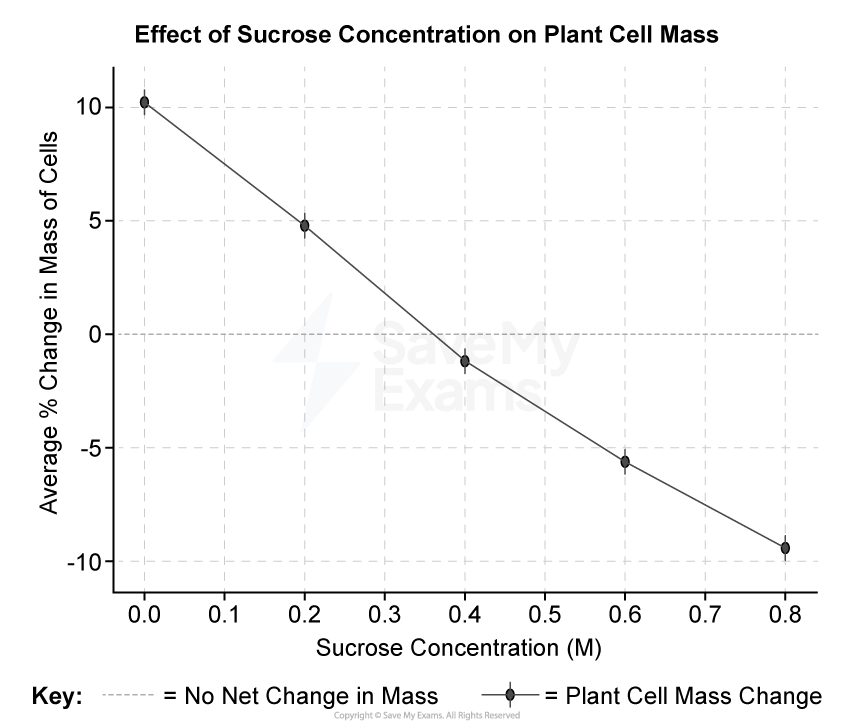Active transport of glucose in animal cells depends on membrane transport proteins, such as the sodium-glucose cotransporter (SGLT), which relies on ion gradients maintained by the Na⁺/K⁺ ATPase. These gradients are established using ATP produced through aerobic respiration. Because enzymes and membrane proteins are sensitive to temperature, the rate of active glucose uptake may vary depending on environmental conditions.
To investigate this, scientists placed identical groups of animal cells into solutions containing glucose and oxygen, then incubated them at different temperatures (5°C, 20°C, 37°C, and 45°C). After 10 minutes, the rate of glucose uptake (μmol/min) was measured.
Table 1: Glucose uptake at different temperatures
Temperature (°C) | Glucose uptake rate (μmol/min) |
|---|
5 | 0.3 |
20 | 1.6 |
37 | 3.8 |
45 | 2.4 |
(i) Describe the relationship between temperature and glucose uptake based on the data.
(ii) Explain a cellular mechanism that accounts for increased uptake from 5°C to 37°C.
(iii) Identify a reason why glucose uptake decreases at 45°C despite a higher temperature.
(iv) Justify your answer based on principles of enzyme activity and membrane structure.





